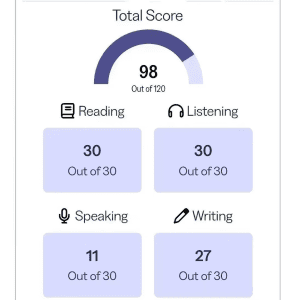The rapid growth of remote work has transformed traditional workplaces, marking a new employment era.
With this shift, the hiring process has grown more intricate. It’s now vital to refine remote hiring methods. Accurate candidate testing is key to finding the best talent online.
For those looking to enhance their hiring process, contact us. Reach out via WeChat:Essay-Kathrine, WhatsApp:+852 4455 3510, or telegram:+1(815)824-0640.
Key Takeaways
- Best practices for virtual testing interviews
- Effective online assessment tools for candidate evaluation
- Strategies for streamlining the remote hiring process
- Tips for conducting successful virtual interviews
- Benefits of using online assessment tools in remote hiring
The Shifting Landscape of Virtual Recruitment
Since 2020, the recruitment landscape has undergone a significant transformation. Remote hiring has become a crucial part of modern talent acquisition strategies. This shift is driven by technological advancements, changes in workforce demographics, and the need for flexibility in today’s workplace.
How Remote Hiring Has Transformed Since 2020
The COVID-19 pandemic has sped up the adoption of virtual recruitment tools. This has fundamentally changed how organizations find and hire top talent. Remote hiring process has become more efficient, with companies using technology to reach a broader pool of candidates. Recent studies show that remote work is becoming more common, with many companies adopting flexible work arrangements.
The move towards virtual recruitment has also spurred the development of new tools and platforms. These innovations enable companies to assess candidate skills more effectively, regardless of their location. This has made the hiring process more efficient and effective.
Key Statistics on Remote Recruitment Effectiveness
Studies indicate that virtual recruitment can be highly effective. Virtual recruitment strategies lead to better hire quality and shorter time-to-hire metrics. Key statistics include:
- Increased candidate satisfaction due to flexible interview processes
- Reduced recruitment costs through minimized travel and logistical expenses
- Access to a global talent pool, enabling companies to find the best candidates regardless of location
By embracing remote hiring process and using the right tools and technologies, organizations can remain competitive in a rapidly evolving job market.
Why Remote Testing Candidates Is Essential for Modern Businesses
In today’s globalized business environment, adopting remote testing candidates has become a strategic necessity. As companies expand their reach beyond local boundaries, the need to assess potential employees remotely has grown significantly.
One of the primary advantages of remote testing is access to global talent without geographical constraints. By adopting remote testing methods, businesses can now reach candidates from all over the world. This ensures they find the best fit for the role.
Access to Global Talent Without Geographical Constraints
Remote testing allows companies to tap into a diverse pool of candidates. It brings in various perspectives and skills. This global access can significantly enhance the quality of hires and contribute to a more innovative workplace culture.
Significant Cost Reduction in the Hiring Process
Implementing remote testing candidates can lead to significant cost reduction in the hiring process. By reducing the need for physical interview spaces and minimizing travel expenses for both the company and candidates, businesses can save substantially.
Moreover, remote testing streamlines the initial screening process. It allows companies to quickly identify top candidates. This way, they can focus their resources on the most promising applicants.
Accelerating Time-to-Hire Metrics
Another critical benefit of remote testing is its ability to accelerate time-to-hire metrics. By automating certain stages of the assessment process and enabling simultaneous evaluations, companies can significantly reduce the time taken to move from candidate application to job offer.
Faster time-to-hire not only improves the candidate experience but also enables businesses to fill critical positions more quickly. This maintains operational efficiency and competitiveness.
By embracing remote testing candidates, modern businesses can achieve a competitive edge in the global talent market. They can also optimize their hiring processes for cost and efficiency.
Planning Your Remote Testing Strategy
A well-structured remote testing strategy is crucial for successful virtual recruitment. Companies must consider several key factors to align with their hiring goals. This ensures a targeted and effective approach.
Defining Clear Assessment Objectives
Defining clear assessment objectives is the first step in creating a remote testing strategy. It involves identifying the specific skills, knowledge, and competencies required for the role. This ensures that testing methods are targeted and effective. For instance, a company looking to hire a software developer might focus on assessing coding skills and problem-solving abilities.
Aligning Testing Methods with Company Values
It’s crucial that the testing methods align with the company’s values and culture. This not only helps in identifying candidates who are a good fit but also enhances the employer brand. For example, if a company values innovation, the testing process could include tasks that require creative problem-solving. As Richard Branson once said, “Train your people well enough so they can leave, treat them well enough so they don’t want to.” This highlights the importance of aligning testing with company culture.
Creating a Candidate-Friendly Testing Roadmap
A candidate-friendly testing roadmap is essential for ensuring a positive candidate experience. It involves clearly communicating the testing process, providing timely feedback, and ensuring that the testing platform is user-friendly. A well-designed testing roadmap can be broken down into several steps:
| Step | Description | Timeline |
|---|---|---|
| Initial Screening | Review of resumes and cover letters | 1-2 days |
| Skills Assessment | Technical or skills-based testing | 3-5 days |
| Video Interview | Personal interview with the hiring team | 5-7 days |
By following these steps and maintaining a candidate-centric approach, businesses can create a remote testing strategy that is both effective and appealing to potential candidates.
Essential Digital Platforms for Remote Candidate Assessment
The shift to remote work has made digital tools for evaluating job candidates essential. Companies now rely on virtual hiring processes more than ever. This has highlighted the need for effective remote candidate assessment platforms.
These digital platforms streamline hiring and open up a wider talent pool. Technology allows businesses to assess candidates globally, overcoming geographical barriers. This improves the quality of hires.
Video Interviewing Solutions Comparison
Video interviewing is key in remote candidate assessment. There are two main types: synchronous and asynchronous platforms.
Synchronous Platforms (Zoom, Microsoft Teams, Google Meet)
Synchronous video interviewing platforms enable real-time interactions. Tools like Zoom, Microsoft Teams, and Google Meet support live video conferencing. This offers a more personal and interactive experience.
Asynchronous Video Tools (HireVue, Spark Hire, VidCruiter)
Asynchronous platforms, such as HireVue, Spark Hire, and VidCruiter, let candidates record responses at their convenience. This flexibility can significantly cut down the hiring time.
Technical Skills Assessment Software
Technical skills assessment software is vital for evaluating candidates’ practical abilities, especially for technical roles. These tools assess skills through real-world challenges, identifying the most competent candidates.
Coding Challenges (HackerRank, CodeSignal, Codility)
Platforms like HackerRank, CodeSignal, and Codility provide coding challenges that mimic real-world problems. They are essential for evaluating coding skills, problem-solving abilities, and technical knowledge.
Role-Specific Testing Tools
There are also role-specific testing tools designed to evaluate specific skills. These tools ensure candidates have the necessary competencies for the job.
Using these digital platforms enhances remote candidate assessment processes. It makes them more efficient, accurate, and fair. As work landscapes evolve, adopting these technologies is crucial for staying competitive in the talent market.
Designing Effective Skills Assessments for Virtual Environments
The transition to virtual hiring demands new strategies for skills assessments. It’s essential to ensure candidates are evaluated fairly and effectively. As remote work becomes more prevalent, the need for reliable virtual skills assessments grows.
Balancing Technical and Soft Skills Evaluation
Virtual skills assessments must balance technical and soft skills evaluation. Technical skills show a candidate’s job-specific abilities. On the other hand, soft skills reveal their fit within the company culture and teamwork potential.
A balanced approach includes both types of evaluations. For example, coding tests measure technical skills, while video interviews assess communication abilities.
Creating Realistic Work Simulations
Realistic work simulations are effective in virtual environments. They replicate the tasks and challenges candidates will face, offering a true measure of their skills.
For instance, a marketing candidate might create a social media campaign. A customer service representative might engage in a simulated call exercise.
Incorporating Problem-Solving Scenarios
Problem-solving scenarios are crucial in virtual assessments. They test critical thinking and decision-making. These scenarios can be presented through various formats, including video cases and interactive modules.
| Assessment Method | Technical Skills | Soft Skills |
|---|---|---|
| Coding Tests | High | Low |
| Video Interviews | Medium | High |
| Work Simulations | High | Medium |
By combining these methods, organizations can fully understand a candidate’s abilities. This ensures their success in virtual work environments.
Remote Testing Candidates: Best Practices for Different Roles
To effectively evaluate remote candidates, it’s crucial to adapt testing methods to the specific job requirements. Different roles demand different assessment frameworks and evaluation methods.

Technical Position Assessment Frameworks
For technical positions, the assessment should focus on the candidate’s technical skills and problem-solving abilities. This can be achieved through coding challenges, technical quizzes, or project-based assessments.
Key components of technical position assessments include:
- Programming challenges to test coding skills
- Technical knowledge quizzes to assess understanding of specific technologies or concepts
- Project-based evaluations to gauge the ability to apply technical skills to real-world problems
Creative Role Evaluation Methods
For creative roles, the assessment should evaluate the candidate’s creativity, innovation, and ability to think outside the box. This can be done through portfolio reviews, creative project assignments, or innovative problem-solving exercises.
Effective creative role evaluations often involve:
- Portfolio reviews to assess past work and creative capabilities
- Creative assignments that test the ability to generate new ideas or solve problems creatively
- Innovation challenges that push candidates to think creatively under constraints
Leadership and Management Position Testing
For leadership and management positions, the focus should be on assessing leadership qualities, strategic thinking, and management skills. This can be achieved through scenario-based assessments, leadership style questionnaires, or case study analyses.
Important aspects of leadership and management position testing include:
- Scenario-based assessments to evaluate decision-making and leadership under pressure
- Leadership style evaluations to understand the candidate’s approach to leading teams
- Case study analyses to assess strategic thinking and problem-solving capabilities
Structured vs. Unstructured Remote Assessment Approaches
The shift to remote hiring has forced companies to rethink their assessment methods. They now face a choice between structured and unstructured approaches. Understanding the benefits of each is key to making informed hiring decisions in the virtual world.
Benefits of Standardized Testing Protocols
Structured remote assessments provide a standardized evaluation framework. This allows companies to compare candidates fairly. It ensures all applicants are judged by the same criteria, reducing bias and increasing assessment reliability. HR experts emphasize, “Standardization is key to fairness in the hiring process.”
When Flexible Assessment Models Work Better
Unstructured remote assessments, however, offer the flexibility to tailor the evaluation to specific candidate needs. They are particularly beneficial for creative roles or those requiring unique skills. Companies like Google have found success with flexible models, noting that “Flexibility in assessment allows for a more nuanced understanding of a candidate’s abilities.”
Creating Hybrid Evaluation Systems
Most organizations choose a hybrid approach, blending the strengths of both structured and unstructured assessments. This method ensures consistency in protocols while allowing for flexibility where necessary. It enables companies to adapt their assessment strategies to various roles and candidate profiles.
The choice between structured and unstructured remote assessment approaches depends on an organization’s specific needs and goals. By understanding the advantages of each, companies can develop effective hiring strategies that meet their unique requirements.
Real-time vs. Asynchronous Testing: Strategic Implementation
Real-time and asynchronous testing are two distinct methods for assessing candidates. Each has its own benefits and challenges. Companies can select the approach that best fits their needs and goals.
When to Use Live Assessment Sessions
Live assessment sessions, or real-time testing, are ideal for roles needing immediate interaction. They are also crucial for positions where timely feedback is essential. This method offers a more personal and engaging experience. It allows assessors to evaluate a candidate’s soft skills, like communication and problem-solving, in real-time.
- Ideal for customer-facing roles or positions requiring immediate collaboration.
- Enables assessors to evaluate a candidate’s ability to think on their feet.
- Facilitates immediate feedback and a more dynamic assessment process.
Benefits of Self-paced Testing Options
Asynchronous testing gives candidates the flexibility to complete assessments at their own pace. This is especially beneficial for those in different time zones or with varying schedules. It also minimizes the risk of technical issues that can occur during live sessions.
“Asynchronous testing allows candidates to showcase their skills without the pressure of a timed environment, potentially leading to more accurate assessments of their abilities.”
- Provides flexibility for candidates across different geographical locations.
- Reduces the impact of technical issues on the assessment process.
- Allows candidates to work at their own pace, potentially improving the quality of their submissions.
Combining Approaches for Comprehensive Evaluation
A hybrid approach, combining real-time and asynchronous testing, offers a comprehensive evaluation framework. This strategy allows companies to leverage the strengths of each method. It tailors the assessment strategy to the specific requirements of the role.
By strategically implementing a mix of live and self-paced testing options, organizations can ensure a more robust and inclusive hiring process. This leads to better hiring decisions.
Eliminating Bias in Virtual Testing Environments
Removing bias from virtual testing environments is essential for fair hiring decisions. As remote hiring grows, ensuring these environments are unbiased is a key focus.
Bias in virtual testing can appear in many forms, from assessment design to result interpretation. Companies must adopt strategies that ensure fairness and equity.
Standardizing Evaluation Criteria
One effective method to reduce bias is by standardizing evaluation criteria. This means creating clear, objective benchmarks for candidate assessment. By using the same criteria for all, companies can reduce personal biases.
Standardized criteria also make the hiring process more transparent. Candidates know what’s expected, and assessors can concentrate on relevant skills.
Implementing Blind Testing Techniques
Blind testing techniques are a strong tool against bias. By removing candidate identities, companies prevent unconscious biases from affecting assessments.
For example, anonymized coding challenges or name removal from written tests help assessors judge solely on the candidate’s work.
Training Assessors on Remote Bias Recognition
Training assessors to recognize and manage bias is vital in virtual testing. They need to understand biases and learn how to mitigate them.
Through regular training and workshops, assessors become more aware of their biases. They learn to make more objective evaluations.
By using these strategies, companies can greatly reduce bias in virtual testing environments. This leads to more equitable and effective hiring processes.
Ensuring Data Security and Candidate Privacy
Remote candidate testing has become more common, making data security and candidate privacy paramount. Companies must ensure their virtual recruitment processes are both efficient and secure. This is essential for maintaining trust and adhering to legal standards.
Compliance with Regional Privacy Regulations
Compliance with regional privacy laws is a critical aspect of remote hiring. For example, firms in the European Union must follow the General Data Protection Regulation (GDPR). Those in California must comply with the California Consumer Privacy Act (CCPA). Understanding and implementing these regulations is vital for avoiding legal issues and preserving a good reputation.
Secure Testing Platform Requirements
The choice of testing platform is crucial for data security. Look for platforms with end-to-end encryption, secure data storage, and regular security audits. They should also meet relevant data protection standards. A secure platform can greatly reduce the risk of data breaches.
Ethical Considerations in Remote Assessment
There are ethical considerations in remote assessments that organizations must address. Transparency with candidates about data usage, storage, and protection is key. Companies should have clear data handling policies and ensure all stakeholders are trained on these policies.
In conclusion, ensuring data security and candidate privacy is a complex challenge. It requires attention to regulatory compliance, secure technology, and ethical practices. By focusing on these areas, organizations can foster trust with candidates and stay competitive in the remote hiring market.
Measuring ROI of Your Remote Testing Process
To ensure the effectiveness of remote hiring, companies must measure the return on investment (ROI) of their remote testing processes. This involves evaluating not just the financial aspects but also the overall impact on hiring quality and process efficiency.
Key Performance Indicators for Virtual Assessments
To accurately measure ROI, businesses need to track key performance indicators (KPIs) related to their virtual assessments. Some crucial KPIs include:
- Time-to-Hire: The duration between initiating the hiring process and onboarding a new employee.
- Cost-per-Hire: Total costs associated with the hiring process, including testing and assessment expenses.
- Quality of Hire: Performance metrics of new hires, such as job success and retention rates.
By monitoring these KPIs, companies can gain insights into the effectiveness of their remote testing processes.
Correlating Testing Methods with Hire Quality
It’s essential to correlate the testing methods used with the quality of hires made through these processes. This involves analyzing whether certain testing techniques result in better job performance or higher retention rates.
“The right assessment tools can significantly improve the quality of hire by ensuring that candidates possess the necessary skills and fit the company culture.”
Continuous Improvement Frameworks
Implementing a continuous improvement framework is vital for optimizing remote testing processes. This includes:
- Regularly reviewing and updating assessment criteria based on feedback and performance data.
- Using data analytics to identify trends and areas for improvement in the testing process.
- Adapting testing methodologies to reflect changing job requirements and company needs.
By adopting such frameworks, businesses can ensure their remote testing processes remain effective and aligned with organizational goals.
Measuring the ROI of remote testing processes is not a one-time task but an ongoing effort that requires continuous monitoring and adjustment. By focusing on key performance indicators, correlating testing methods with hire quality, and implementing continuous improvement frameworks, companies can maximize the benefits of their remote hiring strategies.
Case Studies: Successful Remote Testing Implementation
Remote testing has transformed hiring practices across industries. It allows companies to evaluate candidates more effectively, without geographical limitations.
How Tech Giants Revolutionized Virtual Assessment
Tech giants have led the way in adopting and innovating remote testing. Google, for example, has developed advanced algorithms to assess problem-solving skills remotely. Amazon has also introduced AI-driven testing to evaluate technical skills in candidates.
Key Features of Tech Giants’ Remote Testing:
- Advanced AI algorithms for skill assessment
- Integration with existing HR systems
- Real-time feedback mechanisms
Small Business Success Stories in Remote Hiring
Small businesses have also seen significant benefits from remote testing. A healthcare startup reduced its hiring time by 50% with a remote testing platform. An e-commerce small business reported a 30% increase in qualified candidates after using a virtual assessment tool.
| Industry | Remote Testing Method | Outcome |
|---|---|---|
| Healthcare | Virtual interviews and skills assessments | 50% reduction in hiring time |
| E-commerce | AI-driven testing for customer service roles | 30% increase in qualified candidates |
Industry-Specific Remote Testing Innovations
Different industries have developed unique remote testing solutions. The finance sector uses complex simulation tests to assess risk management skills. The tech industry focuses on coding challenges and hackathons to identify top talent.

These case studies highlight the versatility and effectiveness of remote testing. By adopting innovative methods, businesses can enhance their hiring processes, cut costs, and access a wider talent pool.
Conclusion: Building a Future-Proof Remote Testing Framework
As remote work evolves, companies must adapt to stay competitive. A well-designed virtual assessment process is key. It helps identify top talent, cuts hiring costs, and speeds up the hiring process.
Implementing a robust remote testing framework ensures fairness and consistency. It eliminates bias and boosts candidate experience. Digital platforms, like video interviewing and technical skills assessment software, are crucial for a comprehensive strategy.
Creating a future-proof framework requires flexibility and adaptability. Companies must continuously monitor performance indicators like hire quality and candidate satisfaction. This helps identify areas for improvement.
Adopting a future-proof remote testing framework keeps businesses ahead in the fast-changing virtual recruitment landscape. It ensures they attract and retain the best talent in a competitive job market.
FAQ
What are the benefits of using remote testing in the hiring process?
Remote testing brings several advantages, including access to a global talent pool and cost savings. It also improves hiring efficiency. Employers can evaluate candidates worldwide, eliminating the need for in-person meetings and travel costs.
How do I choose the right digital platform for remote candidate assessment?
When picking a digital platform, consider the type of assessment, the number of candidates, and technical support needs. Video interviewing tools and technical skills assessment software are popular choices.
What are the best practices for designing effective skills assessments for virtual environments?
To craft effective virtual skills assessments, balance technical and soft skills evaluation. Use realistic work simulations and problem-solving scenarios. This approach helps gauge a candidate’s job readiness.
How can I eliminate bias in virtual testing environments?
To remove bias, standardize evaluation criteria and use blind testing. Train assessors on recognizing remote bias. These steps ensure a fair assessment process.
What are the key performance indicators for measuring the ROI of remote testing processes?
Key indicators for ROI include time-to-hire, cost per hire, and quality of hire. Correlating testing with hire quality and continuous improvement frameworks optimizes the process.
How can I ensure data security and candidate privacy in remote assessments?
To safeguard data and privacy, adhere to privacy regulations, use secure platforms, and consider ethical implications. These steps protect candidate information and build trust in the hiring process.
What are the advantages of using structured vs. unstructured remote assessment approaches?
Structured approaches offer standardized protocols, while unstructured ones provide flexibility. Hybrid systems combine these benefits, offering a comprehensive evaluation.
How can I implement real-time and asynchronous testing effectively?
Real-time testing offers immediate feedback, while asynchronous testing provides flexibility. Combining both methods provides a thorough evaluation.


